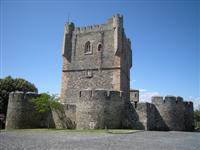
In the remote northeast province of Tras-os-Montes, the small provincial capital, Bragança, lies close to the Spanish border and is slowly being discovered by tourists. This is mostly because of its fine local museum and the small medieval village and castle on a hillock overlooking the town. Between the medieval citadel and the cathedral is the garden of the Museu do Abade de Baçal. The museum itself houses a collection of sacred art and watercolours painted by Alberto Souza. In the medieval citadel is the Domus Municipalis, a pentagonal 12th century civic building which is unique in Europe.
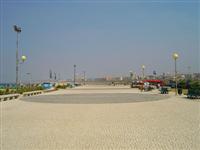
The resort town of Espinho lies just 16 miles (26km) south of Porto. It has a casino and a bullring, as well as a range of shops, restaurants, hotels and campsites. It possesses a long stretch of golden sandy beach popular with surfers, a number of excellent seafood restaurants, and one of the world's oldest golf courses. The Monday market is a popular draw, occupying three city streets with stalls selling local food, crafts, souvenirs and other items. Espinho is easily navigable, with many of its chief attractions located within easy walking distance of the train station downtown. These include local museums, a planetarium, music academy, and the João de Deus city park.
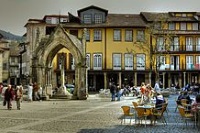
The historic town of Guimarães is regarded as the birthplace of Portugal. Here, in 1128, Afonso Henriques became the first king of the country. Guimarães has many medieval buildings and fortifications, and has been declared a UNESCO World Heritage Site. One of the main attractions is the tiny Romanesque church where Afonso was allegedly baptised, and the imposing Palace of the first Duke of Braganza. There are numerous other Gothic, Romanesque and Baroque delights to discover in walking around the town. There are also two excellent museums: The Museu Alberto Sampaio contains religious art and relics and is housed in a monastery, while the Museu Arquelogico Martins Sarmento displays the finds from a nearby Celtic hill settlement.
On the Porto waterfront stands the church of St. Frances, dating from 1383. While not very imposing from the outside, it has a lavish Baroque interior that was created in the 17th and 18th centuries. Pillars and columns within the vault are festooned with gold-gilded cherubs and flower garlands, entwined animals and fruit cornucopia. This feast for the eyes is set off by wide Gothic arches made of marble that soar into the roof. The Igreja de São Francisco (Church of Saint Francis) is the most prominent Gothic monument in Porto. It is located in the historic centre of the city and has been declared a World Heritage Site by UNESCO.
Address : Rua do Infante D. Henrique
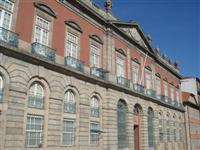
The National Museum Soares dos Reis (Museu Nacional Soares dos Reis), located in the ancient Carrancas Palace in Porto, is one of the most renowned Portuguese museums. This extensive art museum opened in 1840 and is today dedicated to Antonio Soares dos Reis, the famous sculptor born and bred in Porto. The gallery also houses a foreign art collection which includes works by the Dutch, Flemish, Italian and French masters. There is a large collection of Portuguese 19th century works, including those from the Porto school, and exhibits of ceramics, glassware, gold and silverwork, and furniture.
Address : Palacio dos Carrancas, Rua de Dom Manuel II
Website : mnsr.imc-ip.pt
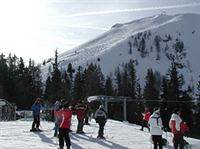
The Serra de Estrela, mainland Portugal's highest mountain range, is fast becoming one of Europe's hottest new resorts for beginner and intermediate skiers and snowboarders. The range is formed from a huge granite ridge that reaches 6,539 feet (1,993m) at its highest point, and its unique topography of strangely-shaped crags and gorges, fast-flowing streams, mountain lakes and pristine forests makes it one of Portugal's greatest natural attractions. The ski resort itself features five miles (7.4km) of skiable snow, nine runs ranging in difficulty from absolute beginner to intermediate, and a terrain park for snowboarders. There are also hiking trails, chic restaurants and high-class health spas.
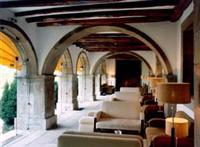
Many visitors come to Porto for its foritified wines. The place to head for samples of every port produced in the region, and also the rest of Portugal, is the Solar Vinho do Porto. It is found in the splendid grounds of the Crystal Palace Gardens and in the vicinity of the Romantic Museum of Quinta da Macieirinha. Inside the rose-bedecked villa is a relaxed, upmarket tasting room. Staffed by knowledgeable hosts who offer glasses or bottles of port, you can enjoy complimentary snacks and learn about the port-making process. Also in the villa is a small museum containing a collection of 18th century furniture and paintings.
Address : Rua de Entre-Quintas 220
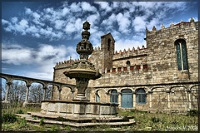
A small town at the mouth of the River Ave, 20.5 miles (33km) north of Porto, Vila do Conde has become a popular summer holiday resort because of its sandy beaches and rocky reefs. This is despite that it does not often feel like a resort. The town has some entertaining local industries, mainly hand-hewn boat building, lace-making, hand-knitting and sweet making. Visitors are welcome at the Rendas lace-making school, where fine examples of the local lace can be purchased while the large Friday market is a good place to find both souvenirs and excellent local food.
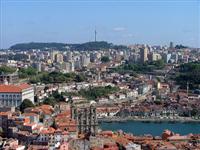
This suburb of Porto lies along the south bank of the River Douro, on the site of an ancient fortified village. Today, Vila Nova de Gaia is home to more than 50 wine companies who operate their lodges in the winding narrow streets flanked by red-roofed buildings. Most of the lodges in Vila Nova de Gaia welcome visitors for tours and tastings. Among the best known are Sandemans, housed in a former 16th century convent, and Taylors. The suburb also features a 16th century monastery that has interesting circular cloisters and a terrace where the Duke of Wellington planned his attack on the French in 1809.

Travel Guide powered by Word Travels, copyright © 2023 Globe Media Ltd. By its very nature information in this travel guide is subject to change at short notice and travellers are urged to verify information on which they're relying with the relevant authorities. Neither Globe Media Ltd nor Travel Vogue can accept any responsibility for any loss or inconvenience to any person as a result of information contained above.